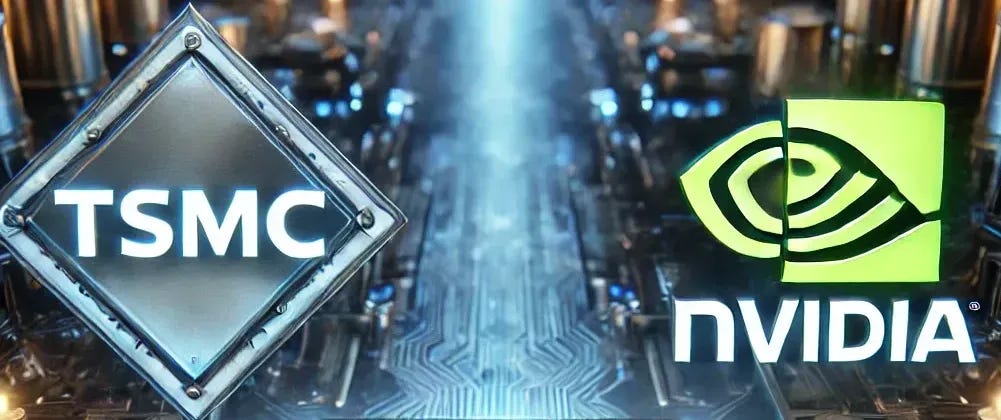What TSMC’s Recent CoWoS Capacity Reveals?
Shift from Hopper to Blackwell, Ramping up Blackwell Prodcution, and Upcoming H20 Ban (almost a "done deal")
Amid incoming “Controls” on Nvidia’s H20 GPUs, I thought this is a good time to dig into part of the AI supply chain (mainly Nvidia and TSMC) to understand the progress of Blackwell production and shipment…and of course, shed light on incoming controls on H20.
TSMC’s CoWoS (Chip on Wafer on Substrate) advanced packaging is known as an essential AI chip packaging technology for most existing AI chips on the market (see Figure)—NVIDIA’s GPUs are not the exception. CoWoS is extremely important but not many people talk about it in Washington or other places. Or perhaps I can make an argument that the five-character “CoWoS” is more renowned in Taiwan than in U.S. cities like New York or DC (a big part of that is because too many TWs investing in TSMC).
As AMD’s CEO Lisa Su said last year, “Everyone in Taiwan knows about CoWoS.“
In specific, let’s zoom in on TSMC’s CoWoS-S and CoWoW-L capacity for NVIDIA’s GPUs in Q1 and Q2 of 2025 on its Hopper (H-Series) and Blackwell (GB/B-series) GPUs. Typically, CoWoS-S packaging is used in Hopper GPUs, and CoWoS-L is used in Nvidia’s Blackwell GPU, for now, Nvidia is the only customer for TSMC’s CoWoS-L technology.
The most recent data suggests an accelerating transition from CoWoS-S to CoWoS-L (this has been suspected over the past few months). The CoWoS-L is projected to make up 35% of total CoWoS capacity by Q1 2025. This means 200K-250K Blackwell GPUs. By Q2 2025, CoWoS-L is expected to increase to 45% of CoWoS capacity, potentially reaching 50% by June 2025, yielding a monthly output of 500K Blackwell GPUs. Other data indicates that the total volume of Hopper GPUs will decline to 600K units (including H20), while H20 GPUs in Q1 2025 have significantly decreased from 500,000 units in Q4 2024 to approximately 100,000 to 200,000 units in Q1 2025. Additionally, there are no samples of the "B20" chips (B-series chips for China) available—I am taking a “wait and see approach on this.”
These developments and data suggest three things:
The first two are clear.
1) The ramping up production and shipment of Blackwell GPUs in Q1 to Q2 2025 amid “incredible demand.” Nvidia and TSMC as well as other supply chain partners are working hard to ensure Blackwell shipment is on track (although GB200s have some technical issues as reported multiple times earlier, not only in media but also in the private reports I have gone through).
This development is largely expected. The Blackwell GPUs have already started shipping to its customers in Q4 2024 (and that’s why you start hearing some technical issues in Blackwell-series GPUs, likely reflected by customers).
2) 2025 will be the year of shifting production from Hopper GPUs to Blackwell GPUs. A Blackwell era is coming and the Hopper Era will gradually fade (slowly). This also means, that we kinda can envision by the end of this year, many AI firms will have these powerful “Blackwell Edge” over their Chinese AI counterparts.
Yet, it is unclear how much this “edge” can bring for U.S. models in the coming years when it comes to competing with Chinese AI models (surely in terms of performance number Blackwell is much more powerful than Hopper), as I said in my latest article on Foreign Policy— “DeepSeek’s success proves that hardware is not the only deciding factor for a model’s success—for now.“
The shift in production from Hopper to Blackwell could be seen as a previous shift from A100 to H100, which does not suggest a decline in overall demand for GPUs. The same goes for CoWoS’ overall capacity (it’s more of a shift capacity from CoWoS-L to CoWoS-S), as I have claimed many times on Twitter/X, I expected the TSMC’s CoWoS annual capacity will still be on track to reach 75K to 80K this year. (some data even suggest this figure could be on the upside of this range).
3) A notable decline in H20 production is likely reflecting incoming export control on H20 GPUs. The ban on H20 looks like a “done deal” to me, considering the supply chain reaction on H20, market interaction revolving around H20, as well as the policy narrative/development in Washington.
The drop in H20 production is key evidence proving the incoming export control on H20, and in fact more evidence supports this view. Nvidia is reported to have stopped taking orders from Chinse customers since August 2024.
This is likely because the Biden administration had reportedly already considered the H20 ban in its final months, and the policy discussion remained in place under the Trump administration since its inauguration.
While surely, Mr. Trump has the ability to snap his finger the alter the course of policy, at least from policy, market, and industry perspective, H20’s ban is very likely.
Thank you for reading. I hope you enjoy it. :)


